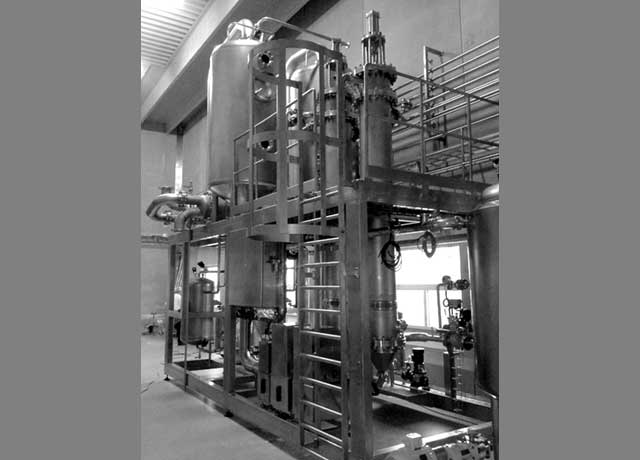Think you can’t evaporate with low temperatures? Think again…

When treating wastewater, sludge and digestate, it can be beneficial to reduce the volume of material or increase the solids content. Mechanical dewatering via a centrifuge or belt press to separate solids and liquids is standard for the water treatment and anaerobic digestion sectors – but what if you want to further reduce the water content of the remaining liquid fraction?
The two main reasons to remove or reduce water from effluent and waste are either to reduce the volume of material in order to cut storage, handling and disposal costs; or to produce materials with distinct properties (such as liquid and solid fractions of digestate), which can then be stored and used in the most appropriate way. The traditional options are drying (which requires large quantities of heat and energy, is costly and inefficient) and evaporation (usually requiring temperatures in excess of 100ºC).
Energy efficient evaporation
However, for many types of effluent, low temperature evaporation can be very energy efficient. Where process temperatures are 85-90º C, low temperature evaporation combines the use of a vacuum to reduce the boiling point of the liquid to be removed, together with traditional high temperature evaporators, based on heat exchanger technology, and surplus heat from heaters and CHP engines can often be utilised for the process.
Heat exchangers from HRS are capable of recovering such heat and using it as the basis for an evaporation system can further improve overall process efficiency. Additionally, using a vacuum in the system to reduce the boiling point reduces the amount of energy required even further. Combining systems into a multiple-effect evaporator allows larger quantities of water to be removed for the same initial heat input, with the vapour boiled off in one vessel used to heat the next.
Selecting the right heat exchanger
The type of heat exchanger used will depend on the nature of the products being treated. For materials with low or medium viscosities, such as wastewater and effluent with low concentrations of organic solids, using the HRS K Series as an evaporator module provides high heat transfer rates with good resistance to fouling. For more challenging and viscous materials, such as thicker effluents, digestate and solids with higher dry matter concentrations, the HRS Unicus Series contains a self-cleaning scraper mechanism which reduces fouling and maintains heat transfer rates (and therefore operational efficiency).
While both the K Series and Unicus Series are commonly used in the type of multi-effect evaporation system described above, both heat exchanger models can also be used in other types of evaporator, such as mechanical vapour recompression (MVR) or thermal vapour recompression (TVR) systems, depending on the needs of the product or application.
The ultimate use of HRS heat exchangers for low temperature evaporation can be found in the HRS Digestate Concentration System (DCS), which uses multiple evaporation effects to increase the solids in liquid digestate three- to four-fold. Whether you want to minimise effluent and digestate volumes using the DCS, or simply reduce them in a more energy efficient way, HRS Heat Exchangers has a low temperature evaporation solution to achieve the required results.